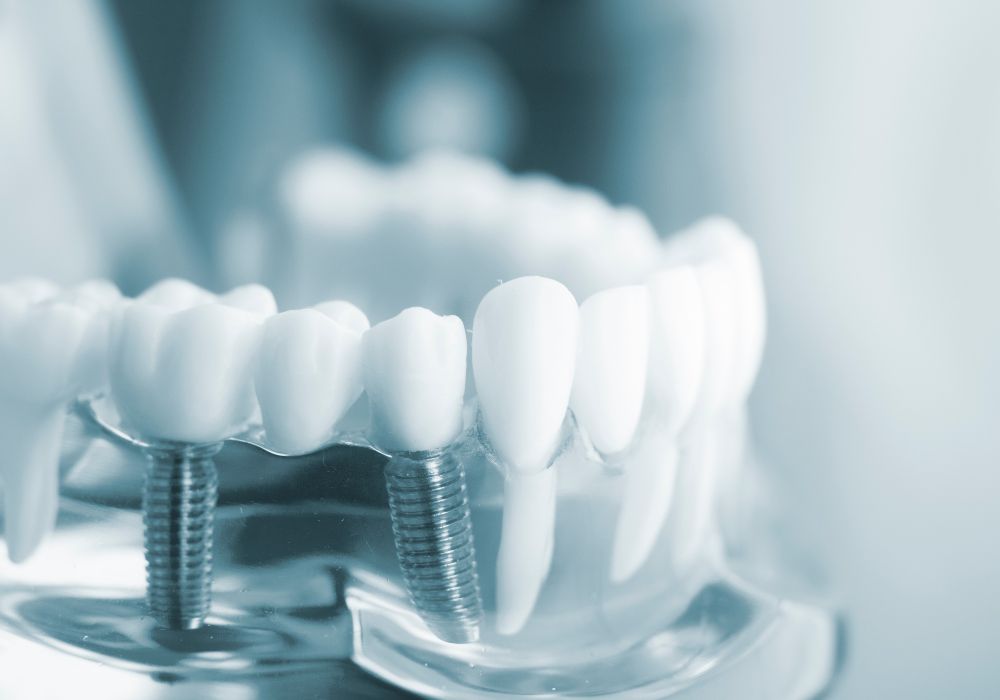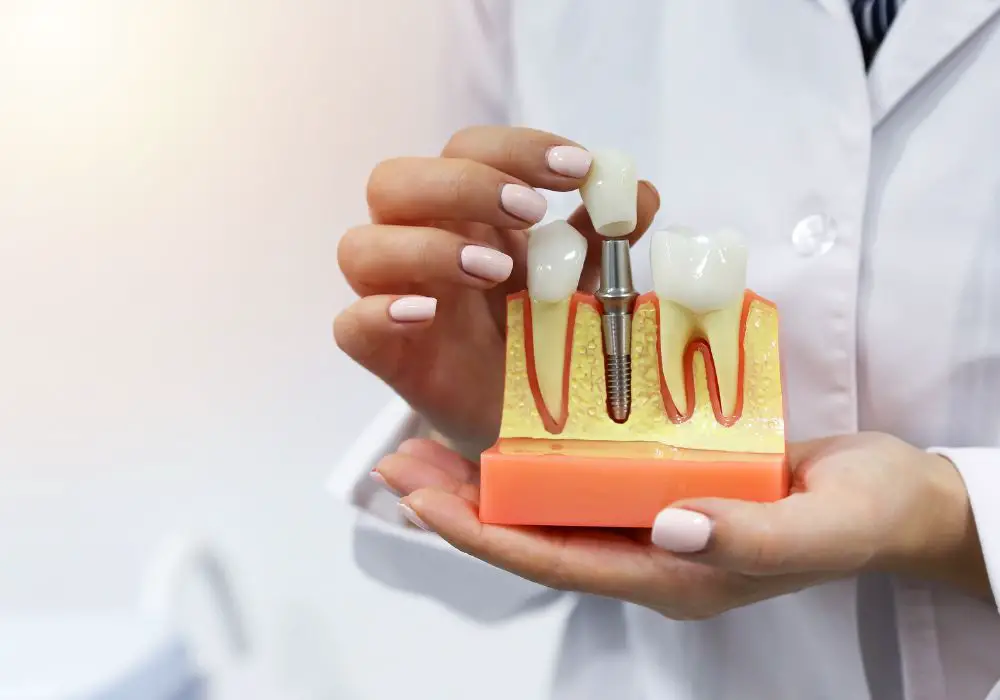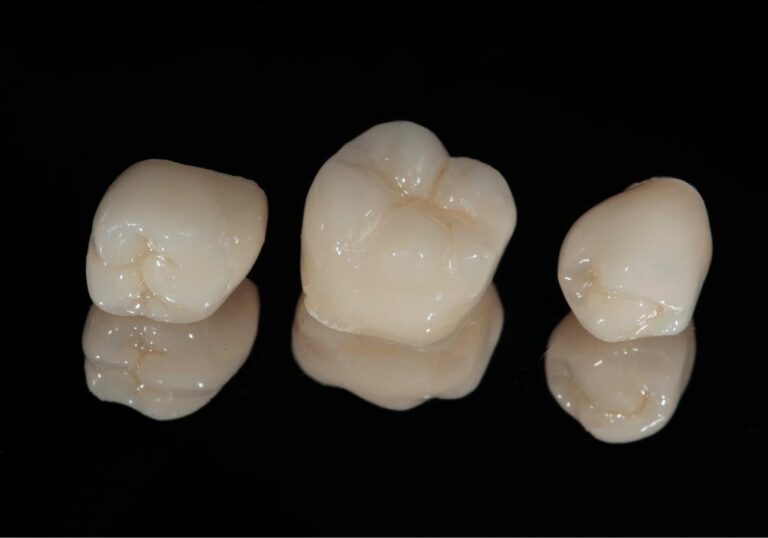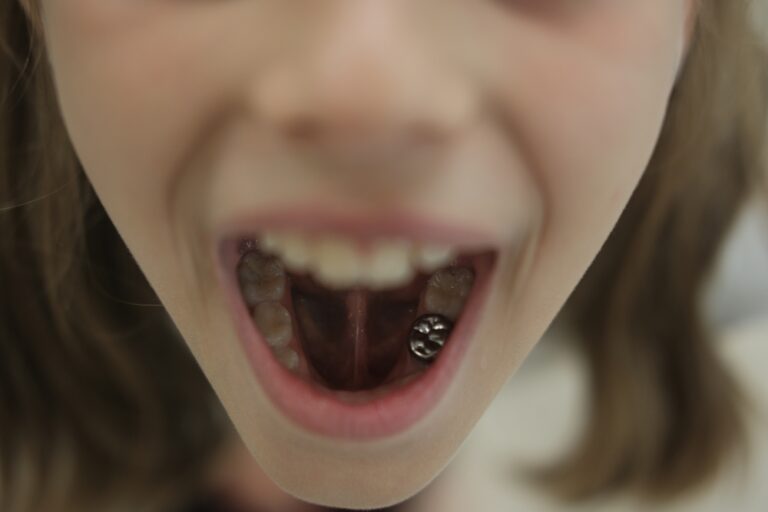Overview of dental implants
Dental implants are a popular and effective way to replace missing teeth. An implant is a small titanium screw that is surgically placed in the jawbone to serve as an artificial tooth root. After the implant integrates with the bone, an abutment and crown are placed on top to create a natural-looking prosthetic tooth.
Implants can be used to replace single teeth or multiple teeth. Traditional implants are placed one per missing tooth. However, in some cases, one implant can support two prosthetic crowns, eliminating the need for two implants. This is known as a “one implant to support two teeth” protocol.
When can 1 implant replace 2 teeth?
Whether 1 implant can support 2 teeth depends on several factors:
Location in the mouth
The strength of the jawbone varies in different areas of the mouth. Back teeth exert much more chewing force than front teeth. As a result, using 1 implant to replace 2 back teeth is riskier than replacing 2 front teeth. The front incisors and premolars are better candidates for a one implant to two teeth solution.
Quality and quantity of jawbone
Adequate bone volume and density are critical for the stability and longevity of dental implants. If there is not enough high quality bone to securely anchor the implant, it may fail under the pressure of chewing forces. Areas with minimal bone loss after tooth extraction have the best prognosis.
Span of the missing teeth
The more space between two missing teeth, the less suitable it is for one implant. Each prosthetic crown needs a minimum surface area for support. Placing two crowns too far apart on one implant can overload it. For one implant two teeth cases, the edentulous span should not exceed two teeth.
Occlusion and loading
The bite force exerted during chewing and clenching must be evenly distributed between the implant and teeth. If heavier forces are placed on one restoration, it may overload the implant. The patient’s occlusion (bite) must be analyzed to ensure proper force distribution.
Oral hygiene and health
Poor oral hygiene and certain conditions like uncontrolled diabetes or smoking can negatively impact implant success. Patients must demonstrate the ability and commitment to maintaining good oral hygiene before being considered for one implant two teeth cases.
Implant size
Standard diameter implants (3.5-4 mm wide) are usually inadequate for supporting two crowns. Using a wider implant (5 mm or more) provides greater surface area for integration and reduces the risk of overload and failure.
Pros and cons of 1 implant for 2 teeth

There are several potential advantages and disadvantages to using one implant instead of two:
Cost savings
Placing and restoring one implant is significantly cheaper than two separate implants. There are savings on the implant hardware, surgery, and crown fabrication.
Less invasive surgery
Having one implant placed reduces surgical time, associated anesthesia, and recovery. There is only one osteotomy and healing is required in one site instead of two.
Preservation of bone
An implant helps maintain bone volume where teeth are missing. Placing one implant instead of two better preserves overall jawbone mass.
However, there are also disadvantages to consider:
Higher risk of failure
Placing excessive load on one implant increases risk of screw loosening, fracture, or loss of osseointegration. Failure rates may be higher than conventional one implant per tooth protocols.
Difficult access for hygiene
It can be challenging to access both crowns on one implant for adequate brushing and flossing. Poor hygiene may lead to inflammation and bone loss around the implant.
Less ideal aesthetics
The gap between two crowns on one implant may be visibly wider than two natural teeth. Achieving good natural looking emergence profiles can also be more difficult.
Need for ideal conditions
As outlined above, many criteria must be met for success. If bone density is inadequate or occlusion unstable, two implants are likely better.
Treatment planning considerations
Careful treatment planning is required to determine if using one implant to replace two teeth is appropriate for a patient. Factors to analyze include:
- CBCT scan to assess bone anatomy, volume, and density
- Nature of missing teeth (molars vs. premolars, span, location)
- Occlusal evaluation – bite force, loading, parafunctional habits
- Periodontal exam – health of remaining dentition
- Hygiene assessment and patient compliance
- Aesthetic demands of the patient
If analysis is favorable, one wider diameter implant can be cautiously considered. Immediate loading is not recommended. Careful surgical technique, implant selection, and controlled prosthetic design are critical for success.
Implant placement procedures

If made the decision to place one implant for two teeth, the procedure is as follows:
Step 1: Pre-surgical consultation – The dentist will conduct a comprehensive evaluation and develop a surgical plan. Instructions are given (medications, diet, cessation of smoking).
Step 2: Implant site preparation – Local anesthetic is administered. The osteotomy site is prepared through sequential drilling with increasing width drills. Bone quality is assessed to determine final drill size.
Step 3: Implant placement – Using a torque wrench, the implant is threaded into bone at the planned position, orientation, and depth. Healing abutments may be placed.
Step 4: Suturing – The gingival flap is repositioned and sutured for primary closure over the implant and bone graft if needed.
Step 5: Post-op care – Antibiotics, pain medication, and chlorhexidine oral rinse will be prescribed. A soft diet is recommended initially with proper oral hygiene.
Step 6: Prosthetic restoration – After 3-6 months of healing, the implant will be uncovered and abutments placed. Final impressions are taken and prosthetic crowns fabricated and inserted.
Expected outcomes: survival rates
Implant survival rates depend on many factors including the implant site, bone quality, surgical technique, and patient health.
Some key statistics on survival rates:
- Single implants – Average of 95-97% survival over 10 years
- Multiple adjacent implants – Survival around 90-95% over 5-10 years
- One implant supporting two crowns – Survival around 85-90% over 5 years
So while success is very high with conventional protocols, it decreases slightly when treatment planning one implant for two teeth. Proper case selection and execution is critical.
Maintaining long term implant success
To achieve lasting results when using one implant for two teeth, patients should follow these guidelines:
- Maintain excellent oral hygiene with daily brushing, flossing, and professional cleanings
- Avoid smoking and excessive alcohol consumption
- Follow a soft food diet initially. Avoid very hard or chewy foods.
- Wear a custom nightguard if grinding or clenching
- Get regular dental exams to monitor the implant, bone levels, and occlusion
- Report any problems like loosening, pain, or sensitivity promptly
With proper home care and professional monitoring, one implant can successfully support two crown restorations long term, preserving bone and reducing treatment cost and complexity compared to two implants.
Frequently Asked Questions
Can I replace two back molars with one implant?
Replacing two missing back molars with one implant is risky. The posterior mandible and maxilla see very high biting forces. Placing two molar crowns on one implant will likely overload it. Two separate implants are recommended.
If I still have one of the natural teeth, can the implant support one crown?
If you still have one natural tooth remaining adjacent to a single missing tooth, it is possible to place one implant and have it support a crown replacing the missing tooth only. The natural tooth will bear some of the biting forces. This can be a good way to avoid placing two implants.
Can I do one implant for two teeth if I have all my other teeth?
Having most or all your other teeth still present and in good health is favorable for one implant two teeth cases. Your remaining teeth will share chewing forces and limit the load on the implant. It is more risky if you are missing multiple adjacent teeth.
How far apart can the two teeth on one implant be?
As a general guideline, the two crowns on one implant should be replacing adjacent teeth, or at most have a single edentulous space between them. Any more than that, and the lever forces may be too high on the implant.
If the implant fails, do I need two implants after?
If the single implant placed to support two crowns fails, in most cases it will be replaced with two individual implants. After failure, it indicates the single implant could not handle the loads long term. Placing two separate implants helps ensure stability and survival.






